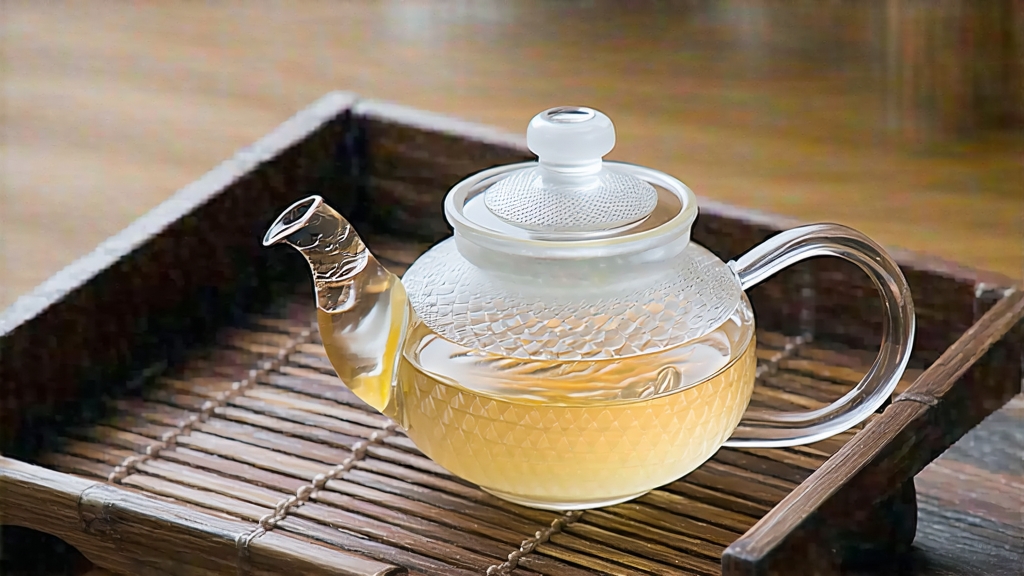
White tea is the quietest child in the Chinese tea family, and among its siblings White Hair Silver Needle (Bai Hao Yin Zhen) is the most ethereal. To the uninitiated it looks like nothing more than a handful of dried twigs, yet once hot water embraces it the leaf tips uncurl into living ivory slivers that seem to have been dipped in moonlight. The first sip is less a flavour than a sensation: cool, expansive, as if you had inhaled the air after a summer storm in the Fujian mountains where it was born.
Legend traces the cultivar to the Song dynasty (960-1279), when a county magistrate in northern Fujian ordered the first plucking of “silver shoots” as tribute to the emperor. Court physicians praised the brew for clearing inner heat, and poets compared its downy buds to the whiskers of immortals. Commercial production, however, did not crystallise until the late eighteenth century around three tiny towns—Taimu Mountain in Fuding, Zhenghe, and Jianyang—where the indigenous Da Bai (Big White) tea tree had mutated into a variety whose spring buds could grow over three centimetres long, longer than any other tea plant on earth. These oversized buds are the sole material of authentic Silver Needle; no leaf, no stem, just the unopened needle wrapped in a silvery duvet of protective hairs.
The picking window is brutal: only the first five warm days after Qingming (early April) when the bud is still closed but already plump. Experienced pickers work backwards through the row, using only thumb and index finger to snap the bud without squeezing it. A full kilogram of finished tea requires roughly thirty thousand buds, all picked before ten o’clock so that the morning dew acts as a natural moisturiser during the long withering hours that follow.
Unlike green tea that is pan-fired or oolong that is bruised and oxidised, Silver Needle is coaxed into being by nothing more than air and time. The buds are laid two fingers thick on bamboo trays stacked like sliding drawers inside a sun-warmed pavilion. For forty-eight hours they rest, losing moisture in slow motion while enzymes gently oxidise the outer cell walls. The master’s skill lies in reading the weather: on humid days he may fire a charcoal brazier underneath to raise the temperature one cautious degree; if the air is too dry he drapes wet hemp cloth over the trays to keep the buds supple. When the leaf spine feels like softened leather and the silver hairs release a faint scent of loquat blossom, the tea is deemed ready. A final fifteen-minute bake at 40 °C fixes the aroma without adding roast character, after which the needles are hand-sorted under full-spectrum light: any bud that has unfurled, reddened or broken is discarded.
The resulting leaf is a study in monochrome elegance—ivory needles whose down catches the light like frost on pine needles. The aroma is equally restrained: dried hay, steamed rice, a whisper of cucumber skin. Only when it meets water does the tea reveal its chromatic range.
For gongfu service, use a porcelain gaiwan of 120 ml capacity and 4 g of tea. Rinse the needles with 75 °C water for three seconds; this is not to clean but to awaken the hairs so they float rather than clump. The first infusion, twenty seconds, yields a liquor the colour of pale chardonnay with a viscosity that coats the lips. Flavour opens with honeydew melon, moves through fresh fennel frond and finishes on the mineral snap of wet granite. By the third infusion the temperature can rise to 85 °C and the time stretch to forty seconds; the cup becomes creamier, almost lanolin, with a lingering note of almond milk. A good Silver Needle will deliver six graceful infusions before it fades into scented water, each steep a subtle migration from floral to milky to stone.
Western-style brewing is more forgiving but less dramatic. Place 2 g of needles per 250 ml glass tumbler, pour 80 °C water, and let it stand for three minutes. The buds hover vertically like tiny submarine periscopes, a mesmerising slow ballet that has converted many coffee drinkers on first sight. Because the leaf is not rolled, extraction is gentle; the tea will not go bitter if you forget it for five extra minutes, making it an ideal desk companion.
Professional cupping follows a stripped-down protocol to isolate texture. Five grams of tea are steeped for five minutes in